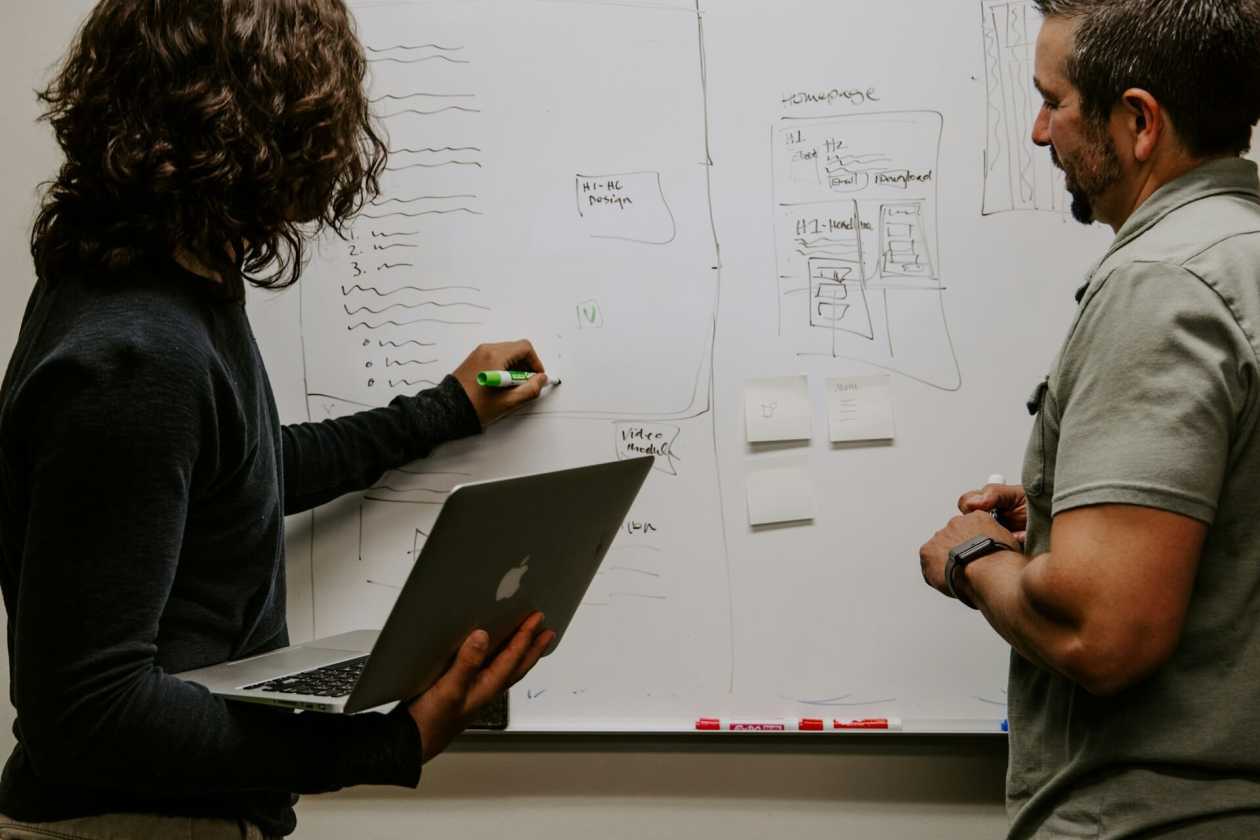
In the ever-evolving field of geospatial technology, Geospatial software development plays a crucial role in solving complex spatial problems and providing innovative solutions for various industries. From urban planning and environmental monitoring to disaster management and logistics, geospatial software applications are vast and transformative. This comprehensive guide will walk you through the entire process of Geospatial software development, from problem identification to final deployment, ensuring you have the knowledge and tools to create impactful geospatial solutions.
Geospatial software development involves the creation of software applications that process, analyze, and visualize spatial data. These applications are designed to handle geographic information and provide insights that help decision-making. The demand for advanced geospatial software has increased significantly with the rise of technologies such as remote sensing, GPS, and GIS.
Geospatial software development encompasses various stages, each requiring specific expertise and tools. Whether you’re a developer, project manager, or stakeholder, understanding the complete lifecycle of geospatial software development is essential for the successful implementation of geospatial solutions.
The first step in geospatial software development is identifying the problem or requirement that needs to be addressed. This involves understanding the context, engaging with stakeholders, and defining clear objectives.
Before diving into the development process, it’s crucial to thoroughly understand the problem at hand. This involves analyzing the spatial problem, the target audience, and the expected outcomes.

Examples of Geospatial Problems
Engaging with stakeholders is essential to gather detailed requirements and ensure the developed solution meets their needs. Stakeholders can include government agencies, businesses, NGOs, and the general public. Ensure you understand their needs, roles and contribution to the solution development.
Clearly outlining the goals and desired outcomes of the project helps in maintaining focus and measuring success. Remember, objectives should be specific, measurable, achievable, relevant, and time-bound (SMART).
Conducting a feasibility study assesses the technical and economic viability of the project. This includes evaluating the availability of data, required technology, and budget constraints.
Once the problem is identified, the next step is to analyze the requirements in detail. This involves understanding the data and software requirements necessary to develop the solution. These include;
Data is the backbone of any geospatial application. Identifying the types of data needed, their sources, and quality is crucial for accurate analysis and visualization.
Types of Data
Ensuring data accuracy, completeness, consistency, and timeliness is critical for reliable geospatial applications.
Selecting the right tools and libraries is essential for efficient development and seamless integration.
Tools and Libraries
Ensuring compatibility with existing systems and adherence to standards (e.g., OGC standards) is crucial for data exchange and integration.

Design and planning involve outlining the system architecture, choosing the technology stack, and creating data models.
Defining the architecture style and components is fundamental for building a scalable and maintainable system.
i) Architecture style
ii) Components
Choosing the right technology stack ensures the efficiency and performance of the application.
i) Backend
ii) Frontend
iii) Databases
Designing spatial models and database schemas is crucial for efficient data storage and retrieval.
i) Spatial Models
ii) Database Schema
A schema diagram is a compelling visual representation of a database system’s structure and organization. Designing a schema that supports spatial queries and indexing for efficient data retrieval.
Developing a project timeline with clear milestones helps track progress and ensure timely delivery.
Collecting and preprocessing data is a critical step to ensure the accuracy and reliability of the geospatial application.

Acquiring data from various sources and ensuring it meets the project’s requirements.
i) Remote Sensing
ii) Field Surveys
iii) Existing Datasets
Cleaning data to remove errors, inconsistencies, and inaccuracies is a crucial step in GIS projects. This process ensures that the data used in the analysis is reliable and accurate. This is essential for making sound decisions based on spatial information.
i) Error Correction
Error correction involves identifying and fixing mistakes in the data. These errors could be due to incorrect data entry, sensor errors, or inaccuracies in data collection. Correcting these errors is essential to ensure the integrity and reliability of the dataset.
ii) Normalization
Normalization is the process of standardizing data formats and units to ensure consistency across the dataset. This step is necessary when combining data from different sources that may use varying formats or measurement units.
iii) Georeferencing
Georeferencing is the process of aligning spatial data to a known coordinate system so that it can be accurately mapped and analyzed. This step is crucial for integrating data from different sources and ensuring spatial accuracy.
iv) Data Transformation
Data transformation involves converting data into the required format and structure for analysis. This step may include reshaping the data, performing calculations, or converting file types.
v) Projection
Projection refers to converting spatial data from one coordinate reference system (CRS) to another. This step is important for ensuring that data layers align correctly when displayed on a map.
vi) Aggregation
Aggregation is the process of summarizing data at different spatial or temporal scales to facilitate analysis. This step can involve calculating statistics such as mean, sum, or count for data points within specified areas or periods.
The development phase involves programming, integrating APIs and services, and ensuring data interoperability.
Writing code to implement the functionalities and features of the geospatial application.
i) Languages
ii) Libraries
Integrating external APIs and services to enhance the application’s functionality.
Ensuring seamless integration between various components and systems.
i) Middleware
Implementing middleware to facilitate communication between different components.
ii) Data Interoperability
Using OGC standards (WMS, WFS, WCS) to ensure data interoperability and exchange.

Testing and validation ensure the quality and reliability of the geospatial application.
Deploying the geospatial software involves setting up the environment, implementing CI/CD pipelines, and ensuring scalability.
Setting up the necessary infrastructure for the application.
Implementing CI/CD pipelines for automated testing, integration, and deployment is a best practice in software development, including GIS projects. CI/CD pipelines help streamline development workflows, reduce manual errors, and ensure that code changes are automatically tested and deployed.
i) Automated Testing
Automated testing involves running tests on your codebase automatically whenever changes are made. This ensures that new code does not break existing functionality and that the application remains stable.
ii) Continuous Integration (CI)
Continuous Integration is the practice of merging all developers’ working copies to a shared mainline several times a day. Each integration is verified by an automated build and tests to detect errors quickly.
iii) Continuous Deployment (CD)
Continuous Deployment is the practice of automatically deploying code changes to production as soon as they pass automated tests. This ensures that new features and fixes are delivered to users quickly and reliably.
Ensuring the system can handle increased loads and scale as needed is critical for GIS projects, especially when dealing with large datasets and high user demand. Scalability and load balancing help maintain performance and reliability under varying loads.
Scalability is the ability of a system to handle increased load by adding resources, such as computing power, memory, or storage. This can be achieved through vertical scaling (adding more power to an existing machine) or horizontal scaling (adding more machines).
Load balancing distributes incoming network traffic across multiple servers to ensure no single server becomes overwhelmed. This helps improve the responsiveness and availability of the application.
Ongoing maintenance and support are essential for the smooth operation of the geospatial software.

Using monitoring tools to track system health and performance is crucial in maintaining the stability and efficiency of GIS projects. Monitoring helps identify issues before they become critical and ensures that the system operates smoothly.
Monitoring system health involves using tools like Nagios and Grafana to keep an eye on server performance, uptime, and resource utilization. These tools provide real-time insights and alert administrators to potential problems, enabling proactive maintenance and quick resolution of issues.
Regularly checking for data updates and ensuring data accuracy and completeness is essential for maintaining the reliability of GIS applications. This involves validating data against predefined standards, correcting errors, and updating datasets to reflect the most current information.
Keeping software and libraries up-to-date involves regularly updating the software and its dependencies to incorporate new features, improve performance, and address security vulnerabilities. This helps ensure that the GIS application remains secure, efficient, and compatible with the latest technologies.
Providing comprehensive documentation and training for users ensures they can effectively utilize the GIS application. This includes creating user manuals, conducting training sessions, and offering ongoing support to help users understand and navigate the system.
Continuously gathering user feedback is essential for identifying areas for improvement and enhancing the application’s functionality. This involves collecting user input through surveys, support requests, and user testing, and then using this feedback to make informed updates and improvements to the GIS application.
Comprehensive documentation is crucial for the development, maintenance, and user adoption of the geospatial software.
Detailed documentation of system architecture, code, and APIs assists developers and maintainers in understanding the overall design and functionality of the GIS application. This includes comprehensive guides on system components, integration points, and detailed code explanations to facilitate future development and troubleshooting.
Instructions and tutorials for end-users help them understand and use the GIS application effectively. These manuals provide step-by-step guidance, feature explanations, and troubleshooting tips to enhance user experience and ensure they can fully leverage the application’s capabilities.
Documentation of data schemas and metadata ensures that data is well-understood and properly used. Data dictionaries describe the structure, relationships, and meaning of data elements, providing a clear reference for data management and integration within the GIS application.
Geospatial software development is a complex and multifaceted process that requires a deep understanding of spatial data, robust technical skills, and a clear focus on the end-users’s needs. By following a structured approach from problem identification to deployment, developers can create powerful geospatial solutions that drive innovation and provide valuable insights across various industries.
Whether you’re a seasoned developer or new to the field, this comprehensive guide provides the essential steps and best practices to ensure your geospatial software development projects are successful and impactful. Embrace the transformative potential of geospatial technology and embark on a journey to create solutions that make a difference in the world.
If you have an addition or question, let me know in the comments section below.